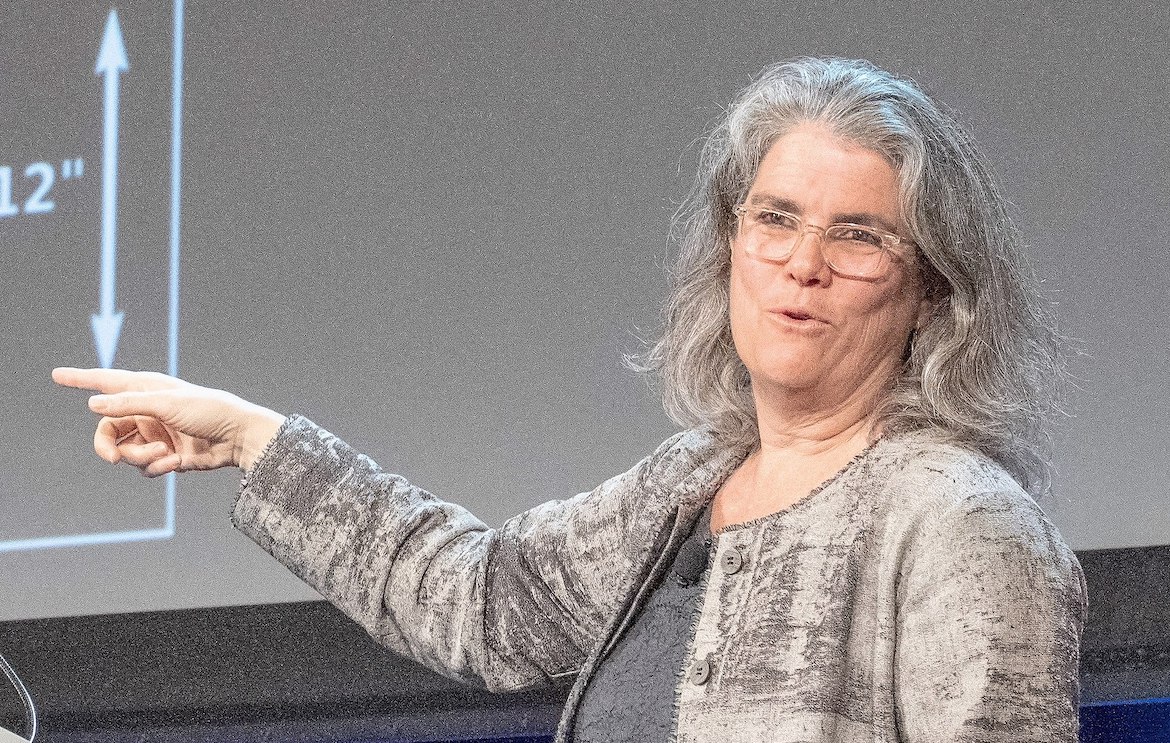Andrea Mia Ghez is an American astrophysicist, Professor in the Department of Physics and Astronomy, Lauren B. Leichtman & Arthur E. Levine chair in astrophysics at the University of California, Los Angeles, and director of the UCLA Galactic Center Group.
Considered one of the world's leading experts in observational astrophysics, she is known for her groundbreaking work on the center of our galaxy, which has provided the best evidence to date for the existence of supermassive black holes.
In 2020, she became the fourth woman to receive the Nobel Prize in Physics (jointly with Reinhard Genzel and Roger Penrose) for "the discovery of a compact supermassive object at the center of our galaxy", now known as a black hole.
Ghez was born in New York City to a Jewish father of Italian, Tunisian and German descent and an Irish Catholic mother. As a child, she attended the Lab School at the University of Chicago and, in high school, found an influential female role model in her chemistry teacher. Fascinated by the Apollo moon landings, she aspired to become the first female astronaut, and was encouraged by her mother who bought her a telescope.
In college, she majored in mathematics, then switched to physics. She obtained a bachelor's degree in physics at the Massachusetts Institute of Technology in 1987, and a doctorate at the California Institute of Technology, under the direction of astronomer Gerry Neugebauer, in 1992.
For her research, which focuses on the center of the Milky Way, Ghez uses high-spatial-resolution imaging techniques, such as the adaptive optics system of the Keck telescopes, to study star-forming regions and the supermassive black hole in the center of the Milky Way known as Sagittarius A*.
"Her work on the orbits of stars at the center of the Milky Way has opened a new approach to studying black holes and her group is currently focused on using this approach to understand the physics of gravity near a black hole and the role that black holes plays in the formation and evolution of galaxies." (UCLA Division of Astronomy & Astrophysics)
My Hero Project identifies her as a science hero, and in 2000, Discover magazine named her one of 20 promising young American scientists in their respective fields.
Ghez also serves on several steering committees, including the W. M. Keck Observatory, which houses the world's largest telescopes and the future Thirty Meter Telescope. In 2004, she was elected to the National Academy of Sciences, and to the American Philosophical Society in 2012. In 2019, she was elected a member of the American Physical Society, and Legacy Fellow of the American Astronomical Society in 2020.
Also very involved in bringing science to the general public and getting young girls interested in the field, she presents her work in many public media outlets such as TED, NOVA's Monster of the Milky Way, Discovery's Swallowed by a Black Hole, TED and the Griffith Observatory, and appears in numerous television documentaries produced by networks such as the BBC, Discovery Channel, and The History Channel. She also appeared in an episode of the PBS series Nova in 2006.
"To me, it’s always been very important to encourage young women into the sciences, so to me the Nobel Prize means an opportunity and a responsibility to encourage the next generation of scientists who are passionate about this kind of work into the field. It’s important to have role models.
I think seeing people who look like you, or people who are different, succeeding shows you that there’s an opportunity there, that you can do it, that this is a field that is open to you. It’s often hard to do things that are different, and if you’re already different there’s an opportunity as long as you have the confidence to do things that are indeed different. I’ve been fortunate to have parents, teachers and mentors who have been incredibly supportive of my interests.
At every stage, someone has always said no, you can’t do this because you’re a girl. I got very used to ignoring when people said I couldn’t do something. There were times when people didn’t believe our approaches would work. I was pretty well trained by then to believe in myself." – Andrea Ghez, UCLA Division of Astronomy & Astrophysics
In 2006, Ghez co-authored the book "You Can Be a Woman Astronomer" with aerospace engineer and writer Judith Love Cohen. Highlighting the fact that women who enjoy puzzles and imagining and visualizing things have some of the skills required to become an astronomer, "You Can Be a Woman Astronomer" is part of Ghez's initiatives to encourage young girls and women to become interested in the scientific fields, and hopefully make it their passion and profession.
In addition to the Nobel Prize in Physics, we can mention among her numerous honors the Annie J. Cannon Award in Astronomy in 1994, the Packard Fellowship award in 1996, the Sloan Research Fellowship Award, the Newton Lacy Pierce Prize in Astronomy of the American Astronomical Society in 1998, the Maria Goeppert-Mayer Award of the American Physical Society in 1999, the Sackler Prize and Gold Shield Faculty Prize for Academic Excellence in 2004, the Marc Aaronson Memorial Lectureship in 2007, the MacArthur Fellowship in 2008, the Crafoord Prize in Astronomy in 2012, the Royal Society Bakerian Medal in 2015, or an Honorary Doctorate of Science of the University of Oxford in 2019.
https://www.astro.ucla.edu/~ghez/
© Photo: BorderlineRebel - CC BY-SA 4.0
Article by Julie Henry Poutrel for Adama Toulon.


